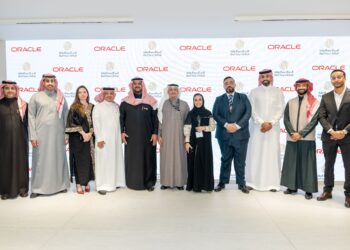NetApp announced the introduction of new capabilities designed for strategic cloud workloads including GenAI and VMware. These enhancements to NetApp data and storage services reduce the resources and risks for customers to manage these strategic workloads across increasingly complex hybrid multi-cloud environments.
“Strategic workloads, including GenAI and virtualised environments, are driving business innovation and have increasingly complex and resource-intensive infrastructure requirements that are pushing IT teams to the limit,” said Pravjit Tiwana, Senior Vice President and General Manager of cloud Storage at NetApp. “NetApp is helping customers take back control of their data with an intelligent data infrastructure that leverages unified data storage, integrated data services, and automated cloud operations. Even when they are up against specific and nuanced technology requirements for modern workloads, NetApp gives them the tools they need to optimise and simplify their data operations in their environments across the hybrid multi-cloud.”
To advance intelligent data infrastructure deployments that better support strategic workloads like GenAI and VMware environments, NetApp is announcing new capabilities, including:
- NetApp BlueXP Workload Factory – for AWS: This intelligent data infrastructure service uses defined industry best-practices to automate the planning, provisioning, and management of cloud resources and services for key workloads, including GenAI, VMware cloud environments, and enterprise databases. Customers can use BlueXP workload factory to optimise deployment time, cost, performance, and protection of resources for strategic workloads as well as their associated data. To simplify workload migrations to the cloud, BlueXP workload factory allows users to profile infrastructure requirements for target workloads and compare different resource options for cost and performance needs. Then, the service can provision the selected resources, move any existing workload data to these newly provisioned cloud deployments, and continually optimise the entire environment to ensure the required cost and performance targets. AWS users can read guidance on how to deploy this capability on the AWS Solutions Library.
- NetApp GenAI Toolkit – Microsoft Azure NetApp Files Version: Customers can now include private enterprise data stored in Azure NetApp Files in their retrieval-augmented generation (RAG) workflows in a secure, programmatic manner. The result is an enhanced ability to generate unique, high-quality, and ultra-relevant results from GenAI projects by combining their proprietary data with pre-trained, foundational models (FMs). The integration of the NetApp GenAI Toolkit with Azure NetApp Files represents a powerful synergy that empowers customers to harness advanced language generation capabilities.
- Amazon Bedrock with Amazon FSx for NetApp ONTAP Reference Architecture: Amazon Web Services, Inc. (AWS) and NetApp have released a joint reference architecture which provides guidance for customers on implementing RAG-enabled workflows that bring proprietary data stored on Amazon FSx for ONTAP into their GenAI data pipelines. Amazon FSx makes it easy and cost effective to launch, run, and scale feature-rich, high-performance file systems in the cloud. The reference architecture allows developers to use APIs for Amazon Bedrock to connect with Amazon FSx for ONTAP data stores, enabling the secure use of proprietary data with a choice of high-performing FMs that can be customised to unlock new insights and capabilities.
- Amazon FSx for NetApp ONTAP Enhancements: AWS announced the next-generation Amazon FSx for ONTAP cloud storage service with enhanced capabilities to boost scalability and flexibility to provide up to 6 GB per second of throughput for a single highly-available (HA) pair from 512 TiB of SSD storage. Next-gen file systems offer virtualised workloads more room to grow with a 300 percent increase in network burst throughput and a 150 percent boost in disk burst throughput. For large-scale, high-performance workloads like GenAI, second-generation Amazon FSx for ONTAP systems support dynamic scalability by adding HA pairs as needed, up to 24 nodes. This delivers up to 72 GB per second of throughput from 1 PiB of SSD storage, providing greater flexibility and performance for evolving business needs.
- NetApp BlueXP Disaster Recovery Support for VMFS: The BlueXP disaster recovery service, which provides guided workflows to design and execute automated disaster recovery plans for VMware workloads across both on-premises and cloud environments, has been expanded to support VMFS datastores for on-premises to on-premises disaster recovery.
These updates build on NetApp’s existing offerings that support storage and data operations for customers that need to implement and manage high-powered, strategic workloads such as GenAI and VMware environments. For example, NetApp recently announced that its unique BlueXP data classification capability, which automatically classifies and categorises data for enhanced governance and secure ingest into GenAI and RAG data pipelines, has become a core control plane capability now available free of charge to all NetApp customers.
“When it comes to GenAI, the prime focus for organisations is to adapt their data strategies to ensure they can balance data security, cost efficiency and innovation as they leverage pre-built LLMs to surface relevant, useful insights from their proprietary, business-relevant data,” said Archana Venkatraman, Senior Research Director, Cloud Data Management at IDC. “NetApp’s intelligent data infrastructure capabilities can help customers overcome the data challenges and offer specific guidance to automate workflows that can securely feed private data directly into public cloud providers’ LLMs. In addition, NetApp’s BlueXP data classification capability has the potential to mitigate the risks in data operations for AI because it allows users to discover and categorise data so that the right data is fed into the right model without exposing confidential, personal or restricted information.”
“Organisations are now facing different economic realities with regards to virtualised environments, and we all need to move quickly to address recent industry shifts,” said Derek Elbert, Solutions Architect at WWT. “Optimising the cost versus performance equation of VMware workloads has become a primary initiative for us, with the objective of continuing to provide scalability and performance while reducing unnecessary system and software resources. NetApp’s offerings, such as the BlueXP disaster recovery service and the optimisation metrics from Cloud Insights, help us better ensure the right levels of resource allocation and protection schemes for virtual environments, allowing us to focus on putting our infrastructure to work without killing the FinOps metrics.”










Discussion about this post